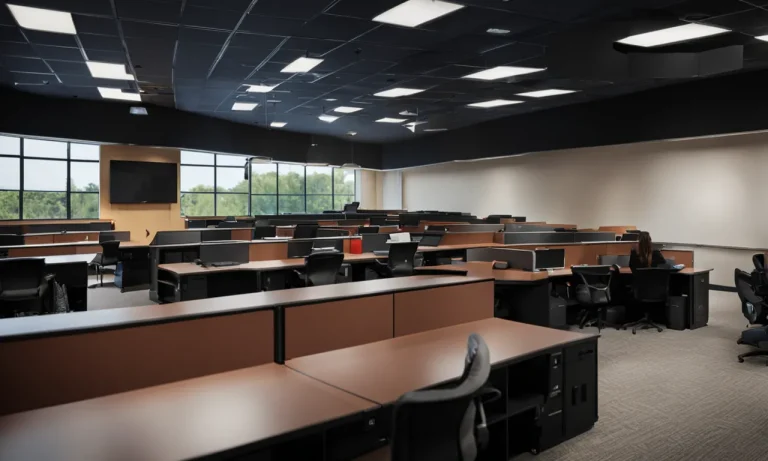For many students and parents, the early morning rush to get ready and catch the school bus is a dreaded part of the daily routine. If you’ve ever wondered why schools start so early in the morning, you’re not alone.
This is a question many people ask as they drag themselves out of bed before sunrise day after day.
If you’re short on time, here’s a quick answer to your question: Schools start early mainly due to parental schedules, bus scheduling, after-school activities, and optimizing learning.
In this article, we’ll explore the main reasons why schools start so early, the research on how early start times impact students, and what some schools are doing differently.
Parental Schedules and Early School Start
Early school start times often coincide with standard work hours, potentially influencing parental decisions and experiences. While not directly causing early school start, parental schedules can interact with them in several ways. For example, working parents, particularly those starting early, might find early school start times easier to manage for drop-offs before their own work obligations begin.
Early school start times benefit families with multiple children attending different schools, aligning drop-off and commute times with parents’ work schedules. Parents can proceed to their workplace without being late.
Additionally, if parents have commitments or work schedules that require them to pick up their children earlier in the afternoon, having school end earlier facilitates this. It allows parents to balance their work and family responsibilities more effectively.
Some parents prefer to have their children home earlier in the afternoon to spend quality time together, help with household chores, or engage in other family activities. That’s why early school start times have a lot to do with parental schedules.
View this post on Instagram
Bus Schedules and Transportation
One of the main reasons why schools start so early is due to bus schedules and transportation logistics. Schools need to ensure that all students can be transported safely and efficiently to and from school, and this often requires careful planning and coordination.
Efficient Routing Requires Tiered Start Times
In order to optimize bus routes and minimize travel time, schools often stagger their start times. This means that different grade levels or groups of students start school at different times. By doing this, schools can utilize their bus fleets more effectively and reduce the number of buses needed.
For example, high school students may start school earlier in the morning, while elementary school students start later. This tiered approach allows buses to make multiple runs, serving different age groups without overlapping too much.
According to School Transportation News, nearly 17 million children in the United States ride school buses every day. By implementing tiered start times, schools can ensure that all students have access to transportation and arrive at school on time.
This also helps to alleviate traffic congestion during peak commuting hours.
Extracurricular Activities and Sports Also Play a Role
Another factor that influences early school start times is the availability of extracurricular activities and sports. Many schools offer a wide range of after-school programs, including sports practices, clubs, and academic support.
In order to accommodate these activities, schools often need to end the school day earlier, which in turn necessitates an earlier start time.
Additionally, sports teams may need to travel to other schools for games and competitions. Early start times allow for sufficient travel time and ensure that students can participate in these events without missing too much school.
This can be particularly important for athletes who may need to balance their academic and athletic commitments.
Academic Factors Behind Early Start Times
Many schools have early start times for a variety of reasons, and several academic factors contribute to this decision. These factors include maximizing learning time in the morning and accommodating teacher planning and collaboration.
Maximizing Learning Time in the Morning
One of the main reasons schools start early is to maximize learning time in the morning. Research suggests that students are most alert and focused during the early hours of the day. By starting school early, students have the opportunity to engage in academic activities when they are most mentally and physically prepared.
This can lead to improved concentration, retention, and overall academic performance. The timing of school start times can have a significant impact on academic outcomes.
Accommodating Teacher Planning and Collaboration
Another academic factor behind early start times is the need to accommodate teacher planning and collaboration. Teachers often require time before the start of the school day to prepare lesson materials, grade assignments, and collaborate with colleagues.
By starting school early, teachers have the opportunity to utilize this time effectively and be better prepared to deliver quality instruction.
Furthermore, early start times allow for more efficient use of the school day. With an early start, there is more time available for instructional activities, extracurricular activities, and other academic initiatives.
This can help schools meet the demands of rigorous academic programs and provide students with a well-rounded education.
It is worth noting that while early start times have their academic benefits, they may also present challenges for students who struggle with waking up early or have difficulty adjusting their sleep schedules.
It is important for schools to consider the individual needs of students and implement strategies to support their well-being and academic success.
View this post on Instagram
Negative Impacts of Early Start Times
Sleep Deprivation Concerns
One of the main reasons why schools starting early is a concern is the issue of sleep deprivation among students. The early start times often force students to wake up at an hour when their bodies are not naturally inclined to be awake.
As a result, many students do not get enough sleep, which can have detrimental effects on their physical and mental health. Lack of sleep can lead to difficulties in concentration, memory retention, and problem-solving abilities.
It can also contribute to increased irritability and mood swings, making it challenging for students to engage and participate effectively in the classroom.
Possible Link to Increased Depression Rates
Research has suggested a possible link between early school start times and increased rates of depression among students. Lack of sufficient sleep can disrupt the natural balance of hormones in the body, including those responsible for mood regulation.
This disruption can increase the risk of developing mental health issues such as depression and anxiety. A study published in the Current Sleep Medicine Reports found that adolescents who had earlier school start times reported higher levels of depressive symptoms compared to those with later start times.
Later school start times predict better mental health including less negative mood, and fewer symptoms of anxiety and depression among adolescents.
It is important to note that the negative impacts of early start times on sleep and mental health are not limited to students alone. Teachers and other school staff members may also experience similar issues due to the early start of their workday.
Therefore, addressing the issue of early start times is crucial for the overall well-being and academic success of both students and staff.
View this post on Instagram
Alternative Approaches and Later Start Times
Many educators and researchers are starting to question the traditional early start times of schools and are exploring alternative approaches to accommodate the needs of students. One such approach gaining traction in some districts is the implementation of delayed start times.
Delayed Starts Gain Traction in Some Districts
Several districts across the country have experimented with later start times and have reported positive outcomes. Research studies have shown that teenagers, in particular, benefit from starting school later in the morning.
This is because their natural sleep patterns shift during adolescence, causing them to stay awake later at night and struggle to wake up early in the morning.
By allowing students to start school later, districts have observed improvements in attendance rates, academic performance, and overall well-being. Students who are well-rested are more likely to be engaged and focused in the classroom, leading to better learning outcomes.
Additionally, later start times have been linked to reduced rates of tardiness and discipline issues.
Some districts have even conducted surveys and held community forums to gather feedback from students, parents, and teachers regarding the potential benefits and challenges of implementing delayed start times.
The majority of responses have been positive, with many stakeholders expressing support for the change.
Obstacles and Tradeoffs to Consider
While delayed start times have shown promising results, there are also obstacles and tradeoffs that need to be considered. One of the main concerns is the impact on extracurricular activities, as later start times may result in scheduling conflicts with after-school programs, sports, and part-time jobs.
Another challenge is transportation logistics. Delayed start times may require adjustments to bus schedules, which could potentially increase costs for districts. However, some districts have found creative solutions, such as staggering bus routes or partnering with public transportation, to address these logistical challenges.
It is important to note that implementing delayed start times requires careful planning and collaboration among various stakeholders, including school administrators, teachers, parents, and students. Open communication and a willingness to adapt are crucial in order to successfully transition to a later start time schedule.
While the idea of later start times may seem unconventional, it is important to consider the well-being and academic success of students. As more research and evidence emerge, it is likely that more districts will explore the possibility of implementing delayed start times as an alternative approach to traditional early school start times.
Conclusion
The early start times seen in many schools today developed mainly out of transportation logistics, scheduling needs, and the goal of maximizing academic learning time. However, research increasingly highlights the downsides of early start times, especially for adolescents.
As a result, later start times are gaining support as an impactful way to improve student wellbeing and performance.
While changing school schedules involves tradeoffs, the benefits of age-appropriate start times are becoming more clear. As research continues to reveal optimal times for student learning and health, schools may continue shifting more towards later start times in the future.






